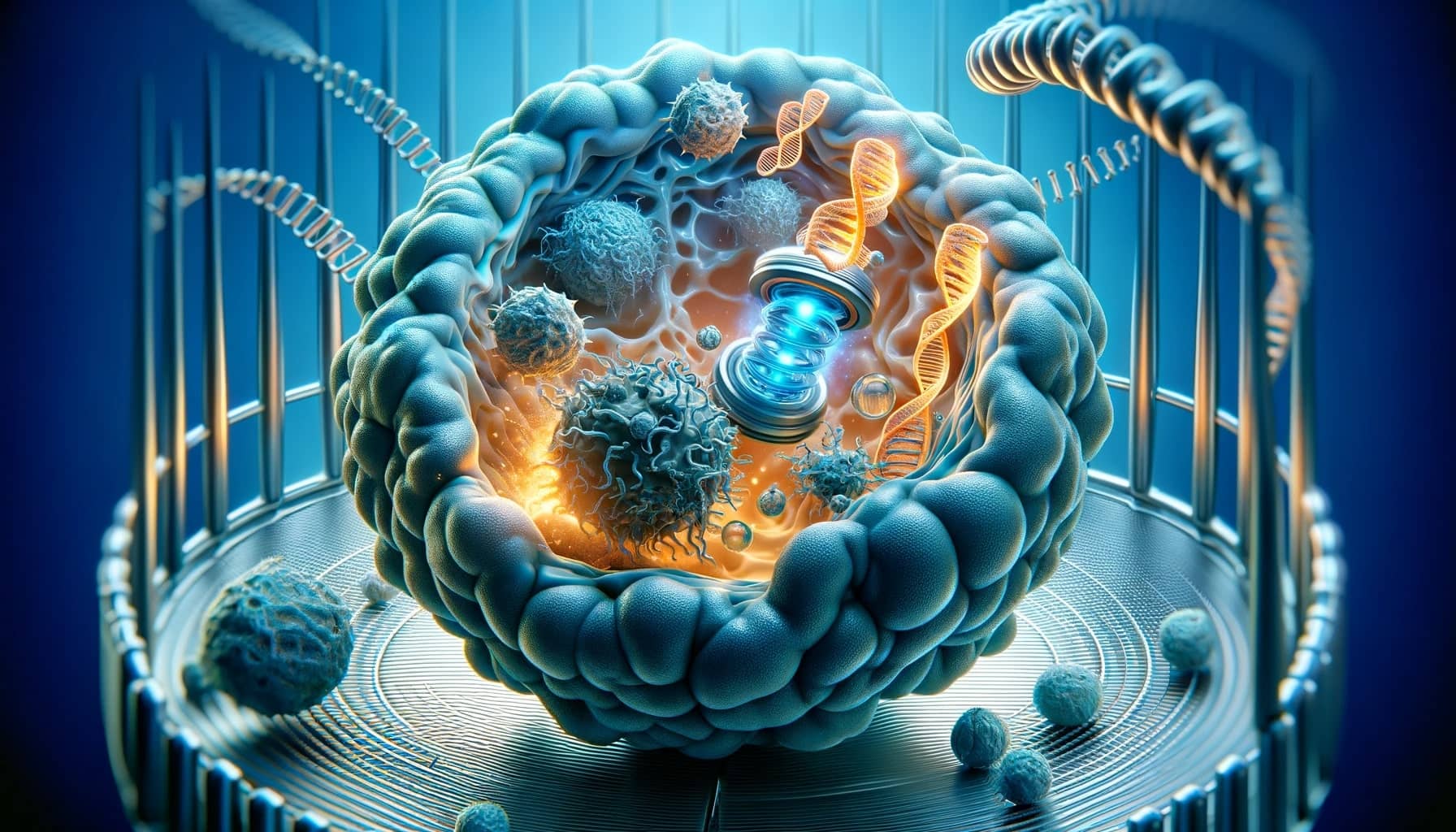
Reviving Cell Energy: How SIRT1 Battles Aging and Diseases
Think of your body like a sophisticated machine that needs to balance the energy it eats with the energy it uses. It’s like a car that changes speed depending on the road. Our cells do something similar – they change how they work based on what we do and our environment. This balance is really important for our health.
Eating Less for Longer Life?
Eating fewer calories without missing out on important nutrients might help us live longer. This idea comes from studies on simpler creatures and a molecule called Sir2, which is like SIRT1 in humans. By eating less but still getting all the nutrients, our body’s metabolism can slow down in a good way.
Exercise: Another Way to Balance Energy
While eating less has its benefits, exercise helps in a different way. Exercise doesn’t change our metabolism the same way eating less does, but it does create an energy shortage that makes our cells work better. This improves our heart health, helps us burn fat, and makes us more sensitive to insulin.
Aging Changes How We Use Energy
As we get older, our bodies change how they use energy. Our cells’ powerhouses, called mitochondria, don’t work as well. This can lead to problems like insulin resistance and other metabolic diseases. Basically, our cells don’t produce energy as efficiently as they used to.
Our Brain and Cell Powerhouses
Our brain needs healthy mitochondria too. If these cell powerhouses are out of balance, it can lead to less energy in the brain and more damage from oxidative stress, contributing to brain diseases like Alzheimer’s. Alzheimer’s starts with a decrease in how the brain uses glucose, making the energy problem worse.
Metabolic Diseases from a Cell’s View
Diseases like diabetes and obesity are linked to less efficient mitochondria. This means our body produces less energy, affecting how it functions and making these diseases worse.
SIRT1: Less Active with Age and Disease
SIRT1, an important molecule in our cells, becomes less active as we age and when we have certain diseases. Its role and presence in cells change over time, reducing its helpful activities.
SIRT1’s Role in Brain Aging
In brain diseases like Alzheimer’s and Parkinson’s, there’s a bigger drop in SIRT1 than in normal aging. This drop worsens these diseases by affecting mitochondria and cell energy.
SIRT1 and Metabolic Diseases
In diseases like diabetes, a decrease in SIRT1 leads to fat buildup and insulin problems. But increasing SIRT1 can help with these issues, showing it’s important for managing these conditions.
SIRT1 as a Treatment Target
Since SIRT1 becomes less active in aging and diseases, targeting it could be a new way to treat these issues. Adjusting SIRT1 could ease the stress on cells and open up new treatment options.
Conclusion: Keeping Cells in Balance
To deal with cell energy stress, we need to improve how mitochondria are made and work, to close the energy gap. SIRT1 is at the heart of this, managing cell survival, metabolism, and aging. Activating SIRT1 could be key in fighting aging and diseases.
Calorie Restriction and Cell Powerhouses
Different levels of eating less can cause good metabolic changes, boosting how mitochondria work. The trick is to find the right amount of restriction.
Careful with NAD+ Supplements
For SIRT1 to work well, we need the right balance of NAD+/NADH. But using NAD+ supplements needs to be done carefully because they can affect inflammation and aging-related conditions.
Mitochondria and SIRT1
When we’re sick, our mitochondria don’t work as well because they change and break apart. Focusing on SIRT1 could help fix this, showing how important it is to understand its role in mitochondria.
Looking Ahead: SIRT1 and Our Health
We still have a lot to learn about SIRT1, but its connection to mitochondria is clear. More research could lead to new ways to improve health and fight aging and diseases.
